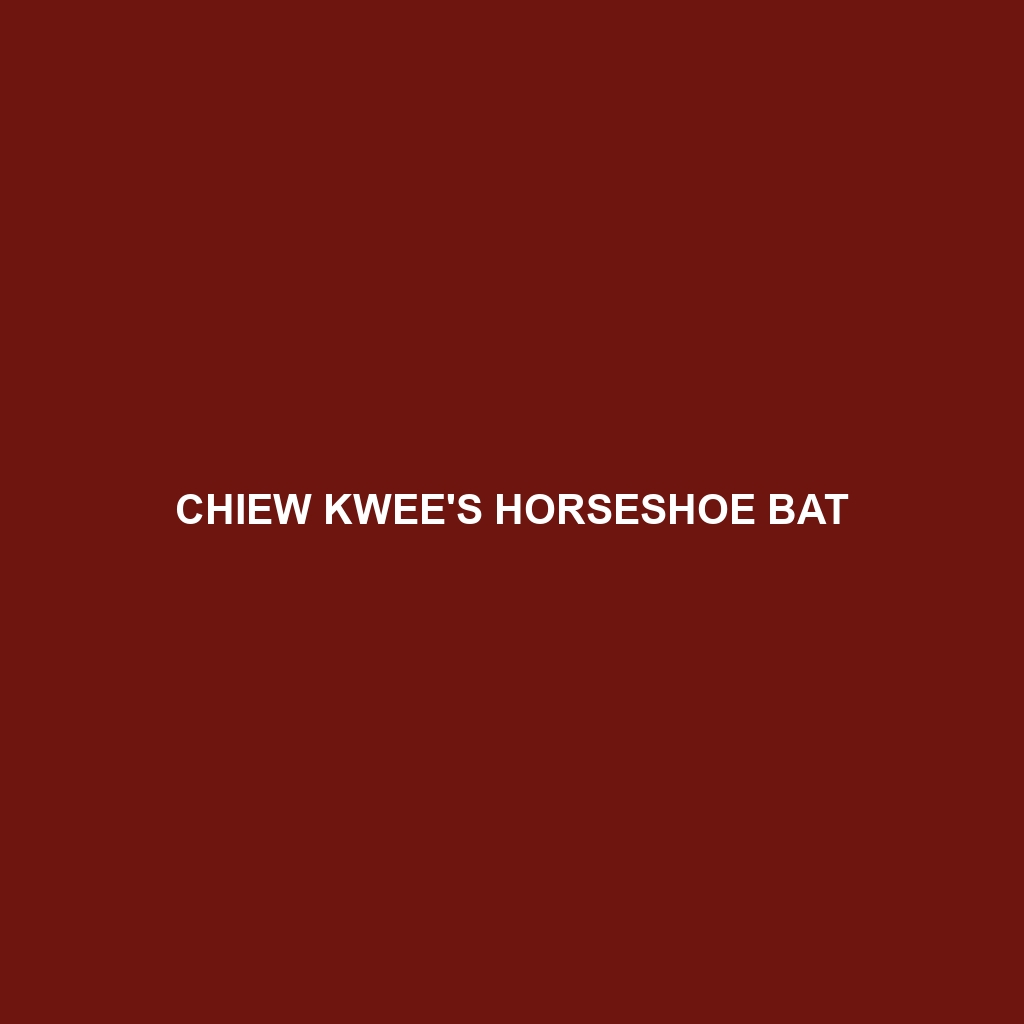Indochinese Horseshoe Bat
Common Name: Indochinese Horseshoe Bat
Scientific Name: Rhinolophus schmidi
Habitat
The Indochinese Horseshoe Bat is primarily found in Southeast Asia, with notable populations in countries such as Thailand, Vietnam, and Laos. These bats prefer tropical forests and limestone caves, where they can roost in large colonies. Their habitat consists of humid environments that provide ample shelter and access to insects, which are essential for their survival.
Physical Characteristics
The Indochinese Horseshoe Bat is a medium-sized bat, typically measuring between 9 to 11 cm in body length, with a wingspan reaching up to 30 cm. They are characterized by their distinctive horseshoe-shaped noseleaf, which aids in echolocation. The fur is generally brown or gray, with a lighter underbelly. Their ears are relatively large and pointed, enhancing their auditory capabilities.
Behavior
Indochinese Horseshoe Bats are nocturnal creatures, most active during the night. They exhibit social behavior, often roosting in large groups. These bats are known for their intricate echolocation calls, which they use to navigate and hunt for insects in the dark. Furthermore, they tend to be loyal to their roosting sites, returning to the same locations seasonally.
Diet
The diet of the Indochinese Horseshoe Bat primarily consists of small insects, particularly moths and beetles. These bats are adept hunters, using their echolocation skills to detect prey in low-light conditions. Their feeding habits contribute significantly to controlling insect populations, making them vital members of their ecosystem.
Reproduction
Indochinese Horseshoe Bats typically breed once a year, with the mating season occurring in late spring. After a gestation period of about 40 days, females give birth to one or two pups. The young bats rely heavily on their mothers for nourishment and protection during the first few weeks of life.
Conservation Status
The current conservation status of the Indochinese Horseshoe Bat is classified as **Vulnerable** according to the International Union for Conservation of Nature (IUCN). Threats to their population include habitat destruction, climate change, and disturbances at roosting sites.
Interesting Facts
– The horseshoe-shaped nose of the Indochinese Horseshoe Bat is not just for show; it plays a crucial role in their ability to echolocate effectively.
– These bats are known for their unique social structures within roosts, demonstrating varying degrees of social interactions that have fascinated researchers.
Role in Ecosystem
The Indochinese Horseshoe Bat plays a critical role in its ecosystem as a pest controller, consuming significant quantities of insects throughout their foraging activities. Their presence supports the health of forests and contributes to the balance of biodiversity in their habitats. As pollinators, they also indirectly facilitate plant reproduction, reinforcing their ecological importance.
